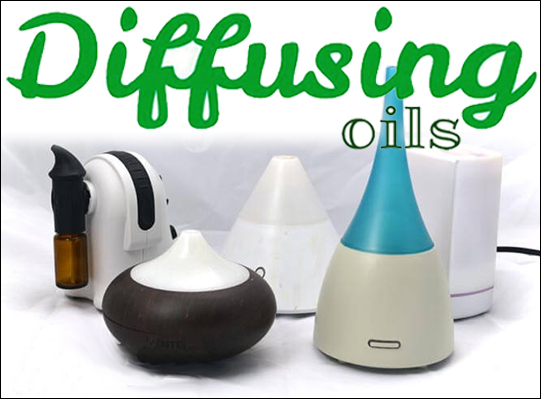
What is an Essential Oil Diffuser?
Diffusion is the process of dispersing essential oils so that their aroma fills a room or an area with the natural fragrance. From the simple to the elaborate, many different methods exist for diffusing essential oils into a room.
Three easy methods exist which can be done with things you probably already have in your household. In addition, there are numerous diffusers and diffusing devices available for purchase. This article will detail the different types of devices and methods that may be used.
Why Should We Diffuse?
• Cleanses odors from the air
• Support the Immune System
• Reduce Stress
• Increase Focus (great for homework time!)
• Mood Lifter: Diffusing = happy hearts
Types of Diffusers
Heat: These are not recommended as heat will damage the constituents of the oil.
Personal (like clay): Essential oil is applied directly to a surface like clay, quickly absorbed and the scent is dispersed within a small distance. The smell is strong at first, but fades. Great for personal mood support but not deep therapeutic use.
Evaporative – fan: This type of diffuser uses a fan to push air through a pad that contains essential oils. The oil is not damaged. This is is an economical choice but because of the size of the molecules, therapeutic value is limited.
Ultrasonic: This time of diffuser disperses essential oils in water. A small disc under the water vibrates rapidly, breaking down the oils into tiny micro particles which them travel out into the air as a mist. With this technology you often “get what you pay for” so its best to buy a quality ultrasonic diffuser rather than cheap ones that break constantly. (Note: never, ever add essential oils to a humidifier. The oils will break down the plastic and chemicals could be released into the water. Without the atomizing technology the therapeutic benefit is much lower)
Nebulizer: This type of diffuser diffuses oils,without water, as a fine mist. The Nebulizer technology breaks down the particles in the essential oil so that they are easily absorbed deep into the body. Its recommended to run a Nebulizer-style diffuser only 15 min. per hour. Our preference is 5 minutes on, 20 minutes off.
The smaller the particle the deeper into the body and lungs it will travel. This is why doctors have patients use nebulizers to administer medicines for breathing and coughing issues.
• Particles between 5 and 20 microns will only reach the upper airway: nose, larynx, trachea
• Particles between 2 and 5 microns will reach the lower airways
• Particles between 1 and 3 microns will reach the alveolar region: (deep part of the lung)
If you can't afford a diffuser yet, you can just put a drop into a tissue or into your hands and breathe the oil in for the aromatic benefits, or breathe directly from the bottle!
